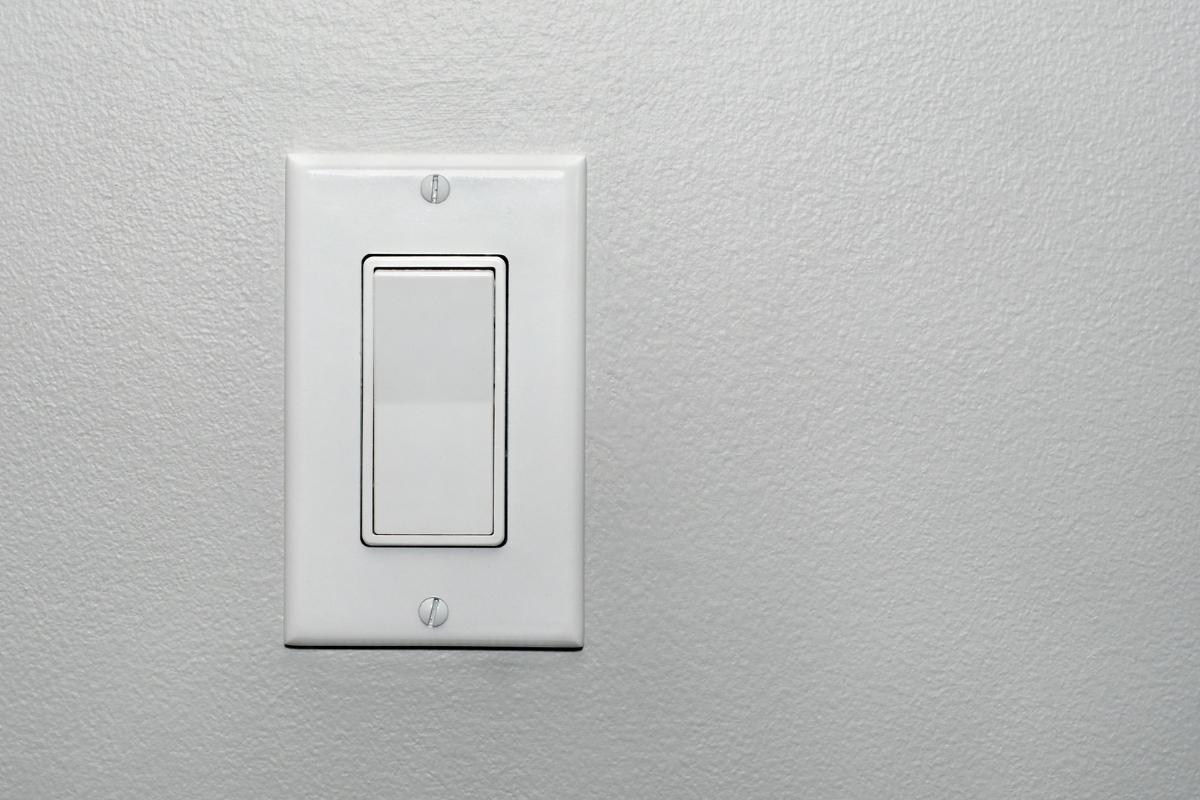Light switches are very important additions to any home or building. A light switch is directly responsible for completing or breaking a circuit for a specific purpose. Most light switches are devoted to home lighting, to turn on and off the light fixture, but can also be installed for a variety of different uses, such as controlling fans.
There are also a wide variety of different switch designs, each with a different feel in terms of functionality and style. Choosing the right ones for each room in your home is essential to have light switches that you’ll be perfectly happy with over time.
Light switches are most commonly found in the form of single-pole, 3-way, wireless, dimmer, moton-activated, and smart switches. Some types of light switches that are currently on the market are as below.
Single Pole Switch
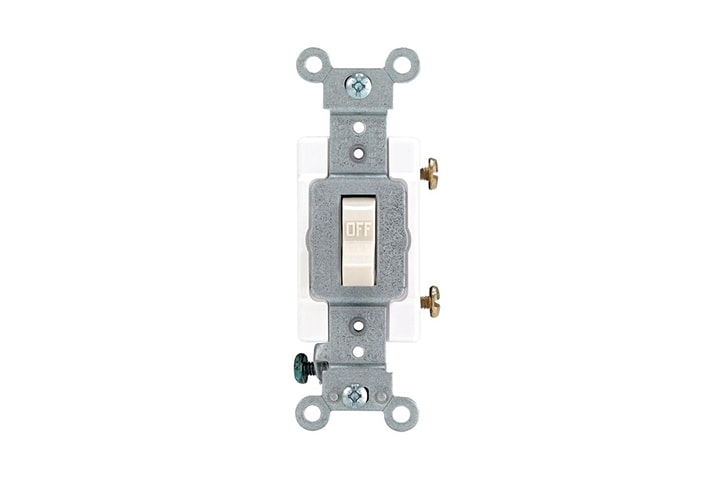
The single pole light switch is the first and most standard type of switch. A single pole light switch controls one input and output and has two states, the ON and OFF. A single-pole switch is often used for light switches, machines, and nearly all home appliances to control the ON & OFF status of an electric circuit from one location.
Furthermore, a single-pole switch can be either latching or momentary. A latching switch will remain ON or OFF once switched by the user until being switched again. For example, A light switch is a latching switch. A momentary switch requires continuous compression to remain ON, such as a doorbell buzzer that the user needs to keep pressing the button. The momentary switch will turn off once the pressure is released.
Why is a light switch called a single-pole switch?
What Are Poles and Throws
The switches are classified according to the arrangements of contacts. When a pair of contacts is connected, the current can flow from one(input) to the other(output), for instance, to turn on your light. When the contact breaks, the light turns off due to no power passed.
The number of pole and throw is used to describe how many contact variations you can have in a switch. To help you better understand, a standard ON/OFF light switch is a single pole single throw(SPST) switch, and a 3-way switch which allows you to control the light from two locations, is a single pole double throw(SPDT) switch.
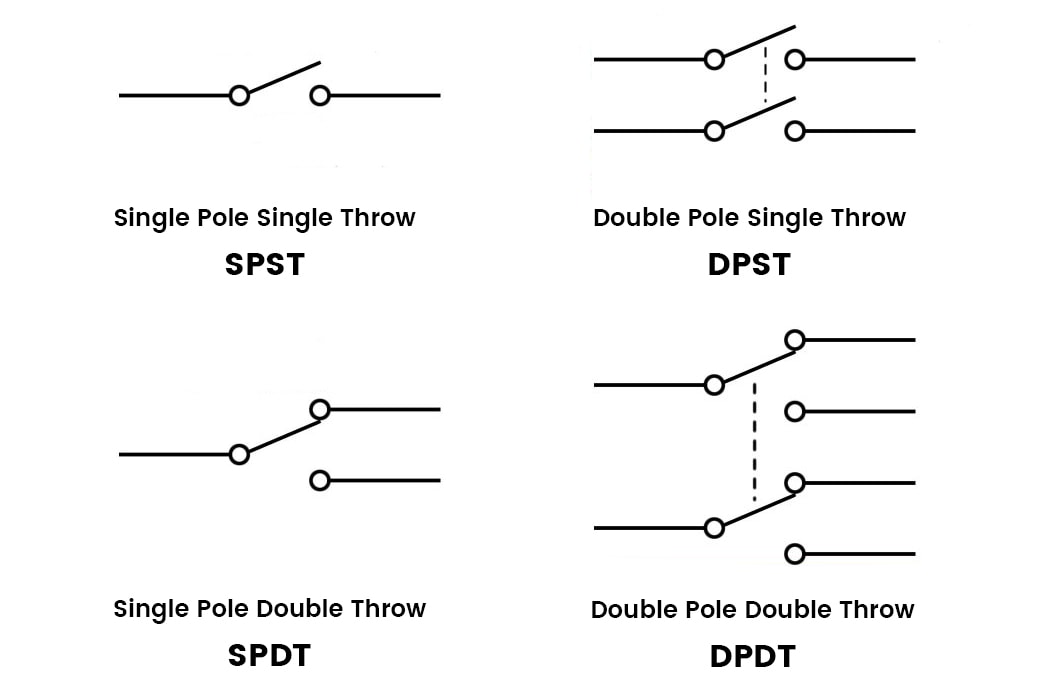
Pole refers to the number of circuits controlled by a switch. For example, a single pole switch can control one electrical circuit, while a double pole switch can control two independent circuits.
Throw refers to the number of separate contacting path choices for each pole. In other words, throw refers to how many positions can be activated by a switch. For example, a single throw switch has one pair of contacts that can either be closed or open(ON or OFF). That said, a single throw switch closes a circuit at only one position. A double throw switch has a contact that can be connected to either of the two contacts. In other words, a double throw switch closes a circuit in either up or down position.
The combination of different numbers of poles and throws makes the commonly seen light switches different from each other.
Double Pole Switch
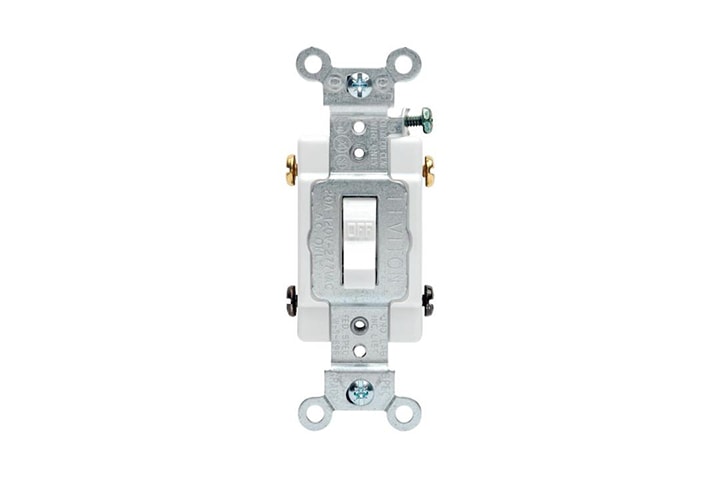
A double pole switch can control two separate circuits simultaneously from one location, for example, to control a light & fan combination kit, or to control two lights in a hallway. A double switch is a double pole single throw switch(DPST) switch. Simply put, you can see a double switch has two individual single switches inside controlled by one toggle.
A double pole switch is rarely used in homes but is commonly used in industrial applications to control 240V circuits, which require the switch to control two hotwires simultaneously, also with a higher current rating for about 30 to 40A compared to a single pole switch.
3 Way Switch
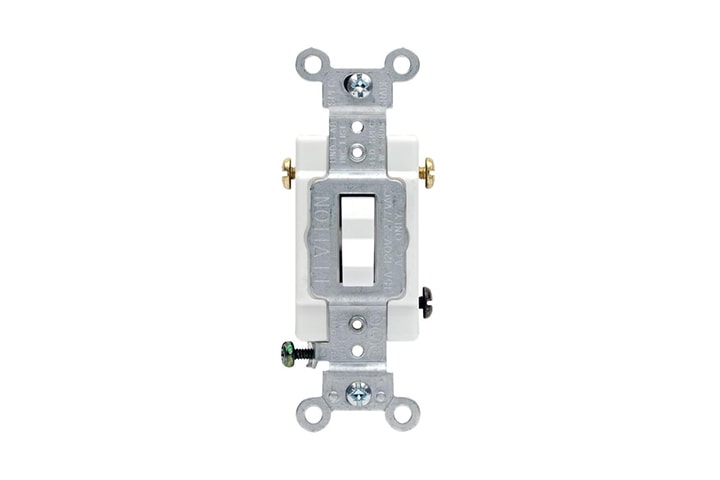
A 3-way switch allows you to control one light from two different locations, thus the name three way. They are often used in pairs at both locations, for example, at both end of a hallway or the top and bottom of a stairway, so users can turn off the light when they get to the other end, without the need to go back. And there is no ON/OFF marking on a 3-way switch because the ON & OFF also depends on the other switch that controls the light. A 3-way switch is a single pole double throw switch(SPDT) switch.
The term 3-way switch is mostly used in the US, while in other counties like the UK, you may find the SPDT switch is called a two-way switch. Don’t get confused.
4 Way Switch
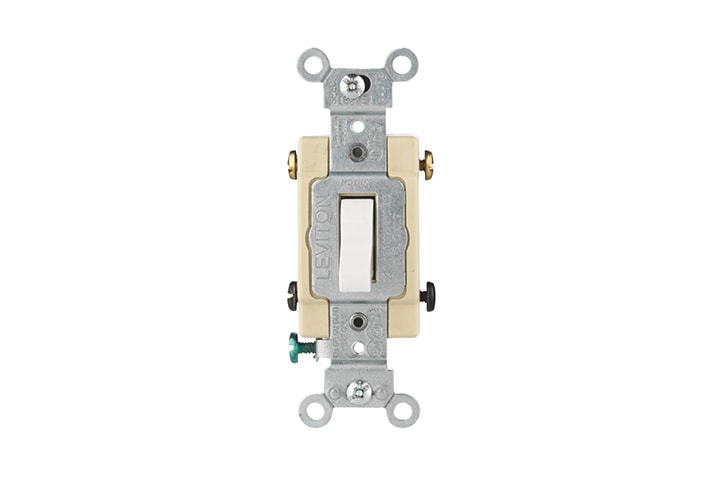
A 4-way switch is a double pole, double throw (DPDT) switch, that is often used in between of two 3-way switches to provide control for the light from three or multiple locations.
The term 4-way switch is mostly used in the US. In other counties, you may find the DPDT switch is called as a three-way or intermediate switch. Don’t get confused.
Dimmer Switch
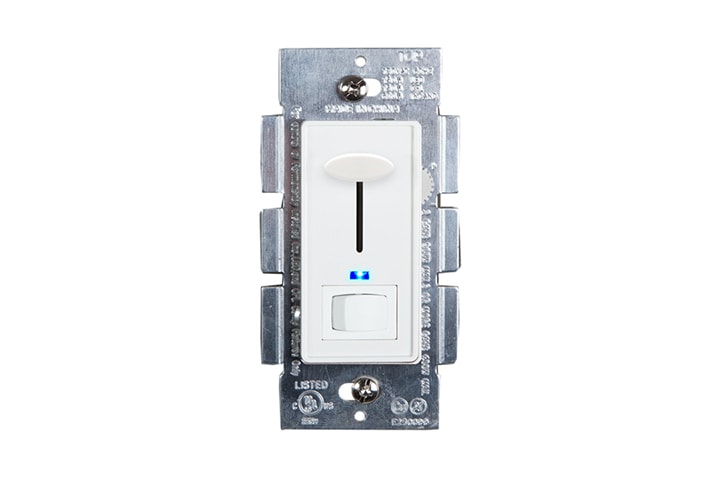
A dimmer switch allows homeowners to control the level of light coming out of lights. They work by quickly turning the light bulb on and off, faster than human eyes can detect, thus creating the light output at a dimmed level.
Dimmer switches should only be installed on lights that allow for dimming features and are not recommended for lights with only ON and OFF feature. Often, dimmer switches come in the form of either a slider or a round knob labeled with different levels for users to adjust the light levels.
Motion Sensor Switch
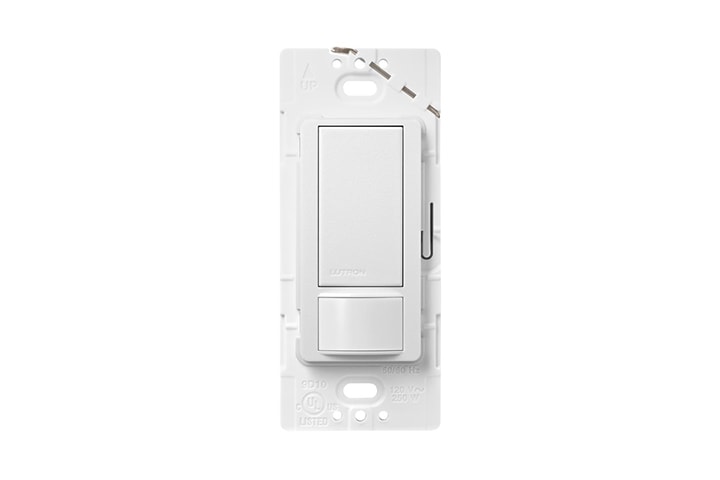
A motion sensor switch is a motion-activated switch controlled by a motion detector. These switches usually use a passive infrared(PIR) sensor or dual technology sensor combined with a PIR sensor and ultrasonic sensor to detect motion signals.
When the sensor detects people in the room, it will turn on and keep the light on, and once the room is unoccupied, it will turn off the light to save energy. Users can manually turn on/off the light if needed. With a motion sensor light switch, you can easily turn any regular light into a motion sensor light.
Toggle Switch
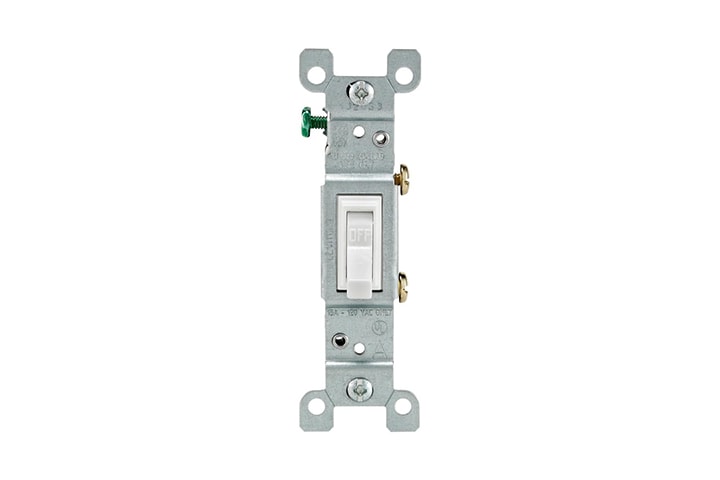
A toggle switch, also called a flip switch, is one of the traditional forms of the light switch. Most toggle switches are single pole switches but can be double pole as well.
The toggle switch is only a kind of control style, and it does not affect the function of the switch.
Rocker Switch
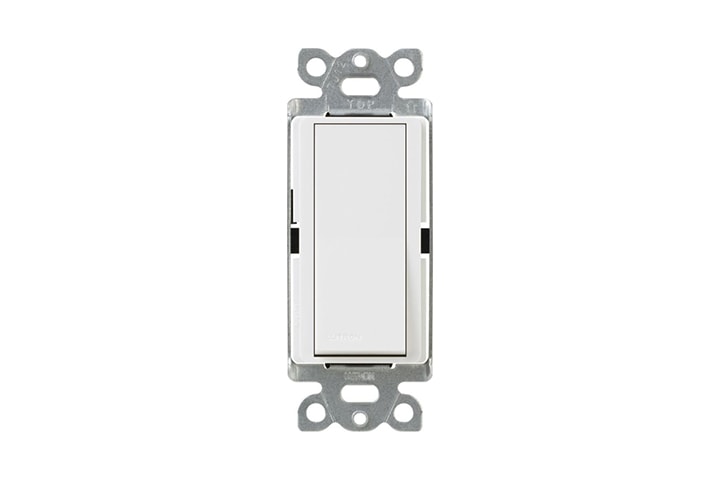
A rocker switch, also called a paddle switch, decorator light switch or Decora light switch, is the most commonly used and popular light switch in the world. Rocker light switch functions just like a toggle light switch but has a modern flat design and feel without the protrusion like toggle and is much easier to flip.
One advantage of the rocker switch is that it does not have a toggle, so users won’t have a problem that the toggle might accidentally snag on their clothes.
Push Button Switch
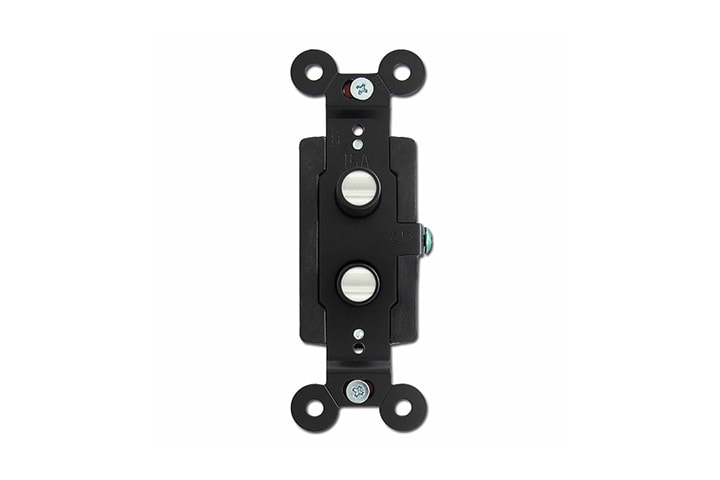
A push button switch is stylish and fits the decor of old houses very well, especially with Victorian home design. Otherwise, they are nearly the same as a standard single pole switch, and when you push the button, the button can either stay pushed or bounce back.
Double Switch
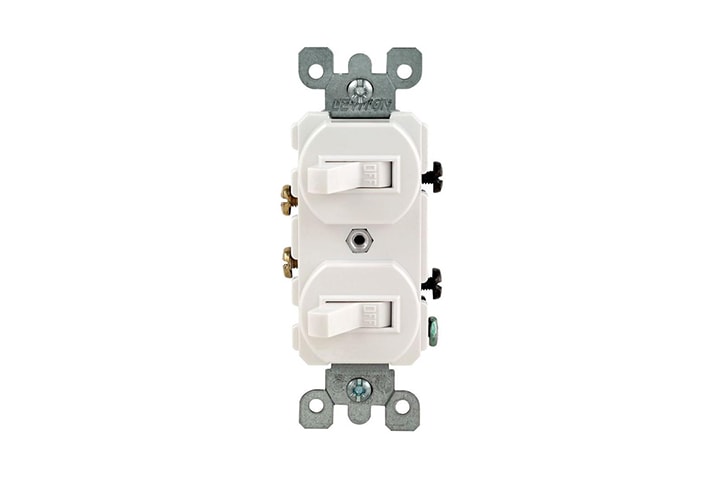
A double switch consists of two individual light switches that fit in one wall box, which is very beneficial if users are running short of available switch/outlet boxes for adding another switch.
Combination Switch
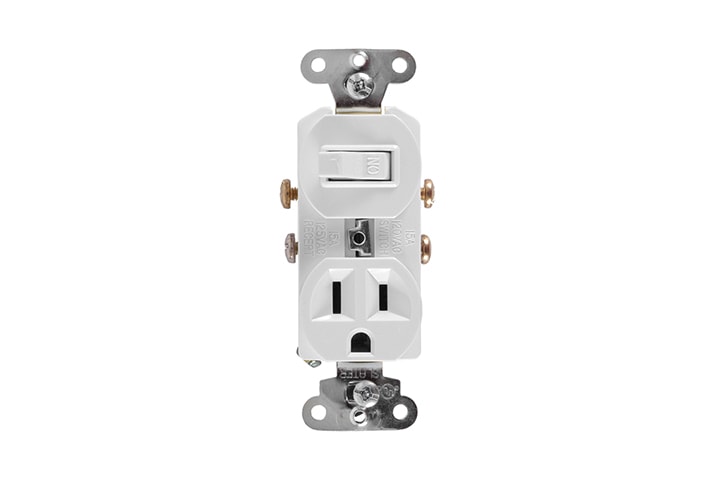
A combination switch, or combo switch, is like a double switch, which is very useful when the room does not have sufficient outlets or the outlets are not located well. You can have a combination of different functions on a single combination switch due to your demand, such as one toggle switch and one plug.
Wireless Switch
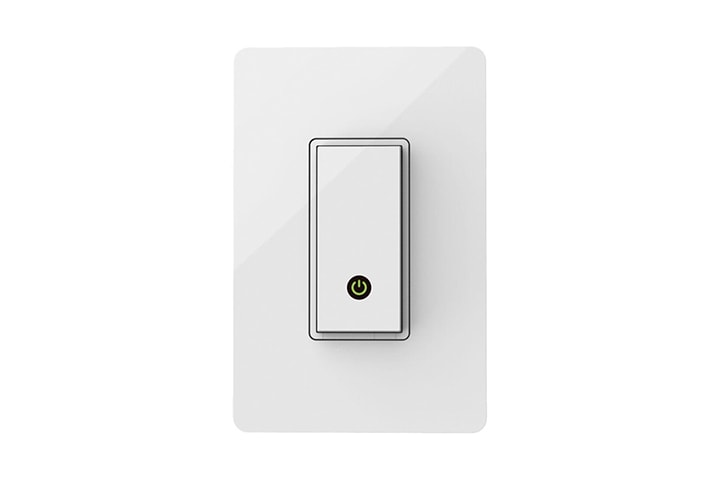
A wireless switch is a very cost-effective way to move electrical switches to more convenient places without the need for construction work for a new outlet or wiring. A wireless light switch does not need to be hardwired, instead, it is controlled remotely, wirelessly by either Bluetooth, wifi, or RF.
A wireless switch usually requires a control box as a transmitter and receiver to communicate with users, but there are also new wireless switches that can be connected to your smartphone directly, which do not need a remote control hub anymore.
Smart Switch
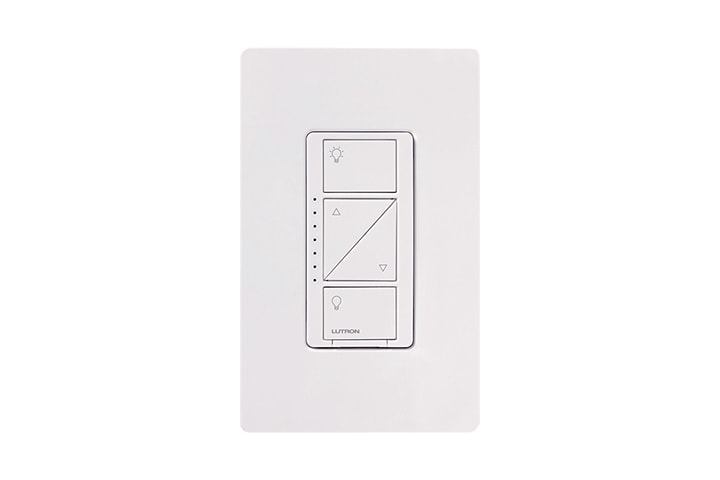
A smart switch usually refers to the new type of wall switch that can be directly controlled via the ecosystem in your house, such as Alexa or smartphone apps. They don’t require traditional manual operations, and users can usually control the smart switch by voice, phone app, or program the smart light switch to work automatically.
A smart switch is an electronic device rather than a light switch, so a hardwired smart light switch would usually require a neutral or ground wire to function properly. Meanwhile, a typical light switch does not necessarily require either a neutral or ground wire to work. The wiring requirement is similar to a motion-activated or dimmer switch, which all have their own internal circuit for controlling the switch independently.

